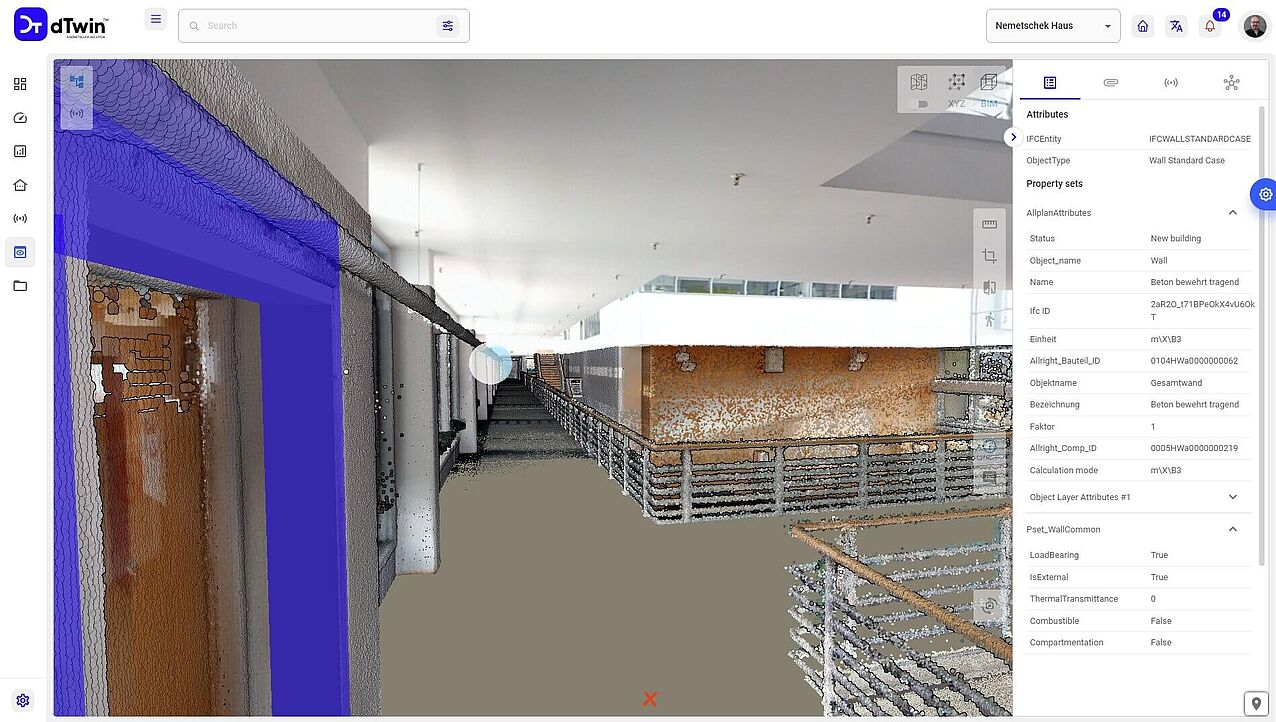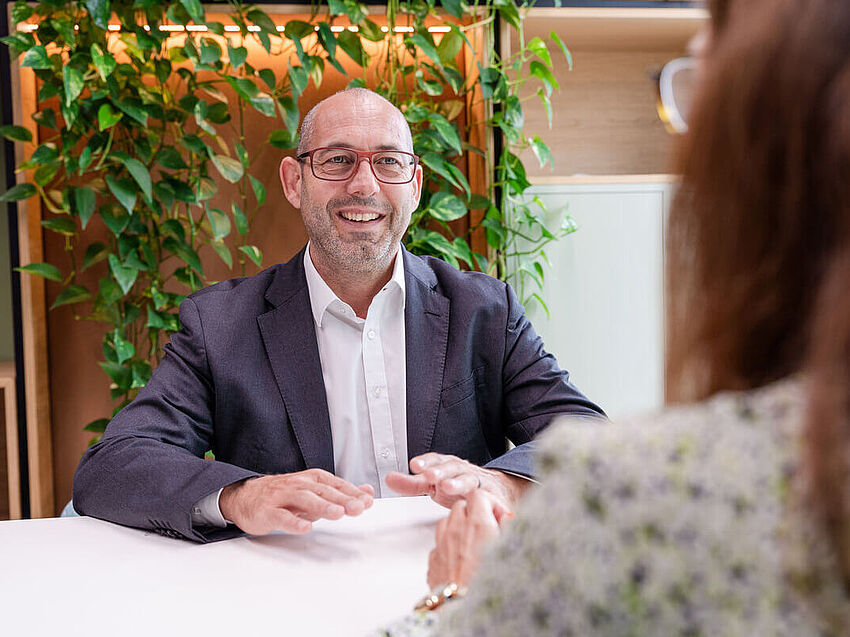One of the emerging technologies changing the architecture, engineering, construction, and operations (AEC/O) landscape is digital twins. Despite being relatively new, digital twins are already revolutionizing how professionals design, build, and manage assets by providing a digital counterpart to physical entities. To delve deeper into this transformative technology, we had the opportunity to speak with Dr. Jimmy Abualdenien, Head of Digital Twins at the Nemetschek Group. In this interview, he sheds light on the essence of digital twins, their advantages, challenges in adoption, and the groundbreaking solutions offered by Nemetschek.
How would you define a digital twin in your own words?
A digital twin represents a detailed virtual model of a physical asset, such as a component, system, or entire building. This model is continuously updated with real-time data from its physical counterpart, accurately mirroring its current state. Beyond visualization, digital twins enable comprehensive analysis, simulations, and optimizations by leveraging this real-time information.
Who benefits from using a digital twin, and how?
Digital twins offer numerous advantages, such as breaking down data silos that exist from the planning stages through to the construction and operation of buildings. Often, valuable data remains isolated and unused across a building's lifecycle. Digital twins keep this data current and accessible by capturing the state of assets using point clouds, photogrammetry, and panoramic imagery.
In addition, digital twins integrate various data streams, harmonizing them across systems throughout the building’s entire lifecycle. This integration allows stakeholders, from AEC service providers to operators and owners, to make data-driven decisions by accessing real-time dashboards and comprehensive reports that provide project analyses and operational insights.

Now, with the integration of AI, digital twins can also perform in-depth analysis based on historical and real-time data, predicting maintenance needs and providing specific recommendations. This not only enhances day-to-day operations but also allows for remote inspections, lifecycle cost analysis, and overall performance optimization, helping stakeholders reduce costs and their environmental impact while improving efficiency.
How can digital twins help the AEC industry to reduce carbon emissions?
In a time when optimizing energy use and promoting sustainability are top priorities for the AEC/O industry, AI-powered digital twins present an advanced solution for minimizing environmental impact. These digital replicas use IoT sensors to monitor real-time energy consumption, while machine learning algorithms analyze the data to identify patterns of inefficiency and overuse. By recommending specific, data-driven solutions, digital twins help reduce energy waste and lower carbon footprints.

Beyond energy optimization, digital twins also enhance other critical aspects such as space utilization and occupancy comfort. In office buildings, for instance, AI algorithms can assess space usage patterns and correlate them with employee productivity and wellbeing. Environmental sensors further aid by monitoring conditions like temperature, humidity, and air quality in real-time. This comprehensive analysis ensures that buildings operate at peak efficiency and comfort, ultimately contributing to a significant reduction in carbon emissions.
What are the main obstacles to the widespread adoption of digital twins?
The AEC/O industry has been slow to adopt digital twins due to the significant effort required to create a fully functional model. The complexity lies in preparing, processing, and harmonizing vast amounts of data from multiple sources. However, advancements in artificial intelligence and machine learning are rapidly overcoming these challenges, paving the way for broader adoption.
Does Nemetschek offer a digital twin software solution?
Yes, Nemetschek offers a comprehensive digital twin solution through its SaaS platform, dTwin. This innovative, open platform delivers data-driven insights and facilitates efficient facility management from design through to operations. dTwin is the first of its kind to consolidate all building data sources into a unified view, bridging the gap between design, construction, and operations with real-time data streams and open API interfaces.

What features does dTwin provide?
dTwin structures and links information across systems throughout a building’s lifecycle. This platform harmonizes data from various sources, enabling decision-makers to efficiently track, filter, and query relevant information. Real-time alarms, dashboards and comprehensive reports offer operational insights and project analysis, serving stakeholders across the AEC spectrum, including service providers, operators, and owners.
What role do BIM models play in the digital twin?
BIM models enable the object-specific recording and structured management of data relating to a building. They are primarily used by design teams, but are also a valuable data basis in building management as part of the digital twin. By synchronizing BIM data between BIMPLUS and dTwin, we enable seamless and loss-free communication between designers and operators of buildings over the entire life cycle. This means that the BIM models are also used and maintained after design and are available as a reliable basis of information during conversion, renovation or demolition.
The future of smart building management
As our conversation with Dr. Jimmy Abualdenien illustrates, digital twins are revolutionizing the AEC/O industry by offering unprecedented oversight, efficiency, and sustainability. These advanced digital replicas not only break down data silos and enable data-driven decision-making but also leverage AI to enhance predictive maintenance and optimize resource use. By integrating real-time monitoring with sophisticated analysis, digital twins empower stakeholders to improve operational efficiency, reduce costs, and significantly lower carbon emissions.

As the AEC industry continues to embrace these innovative technologies, the potential for smarter, more sustainable building management becomes increasingly attainable. Nemetschek's commitment to driving this transformation through solutions like dTwin highlights the immense value of digital twins in shaping a more intelligent and environmentally responsible future for the built environment.



